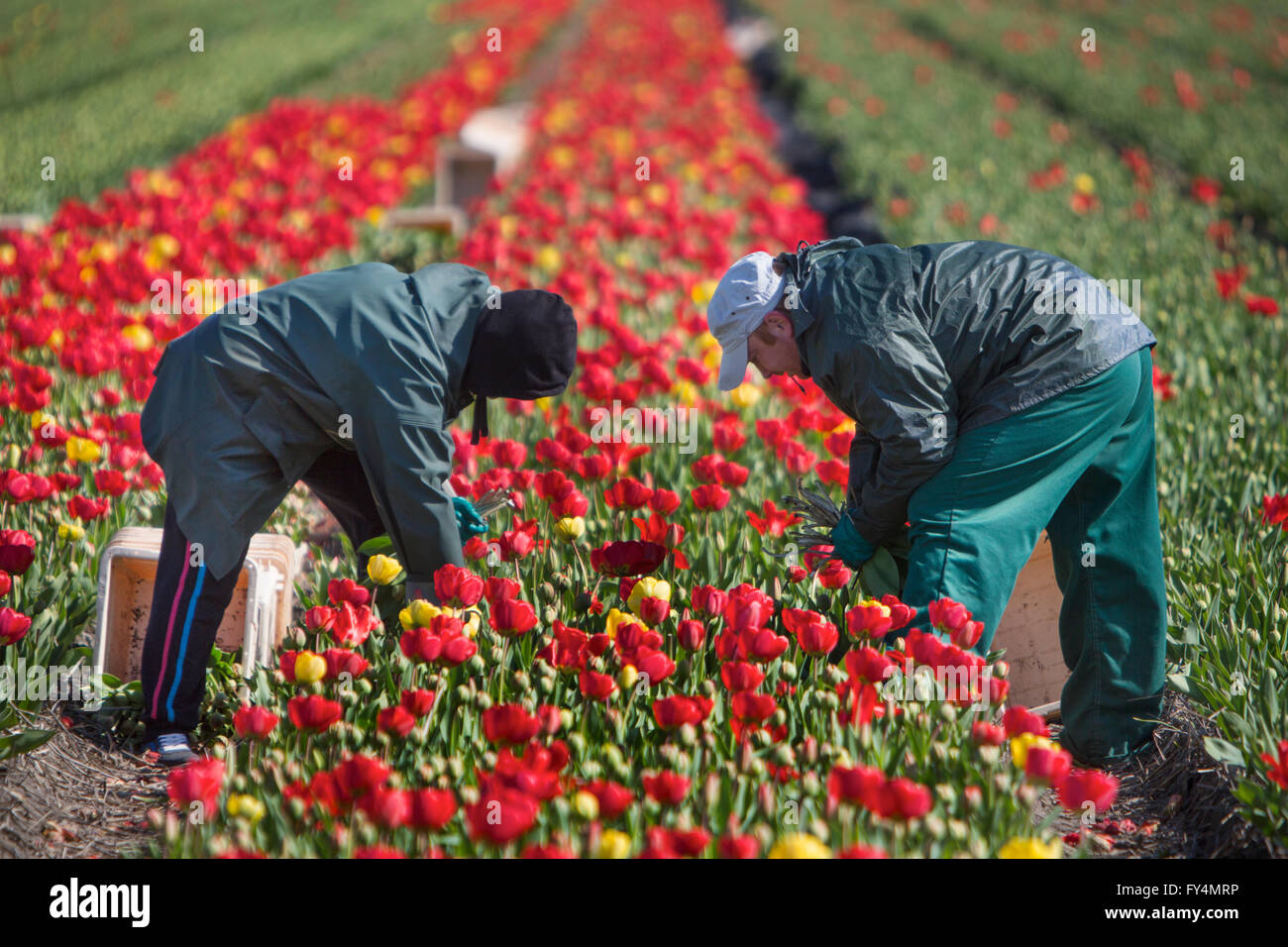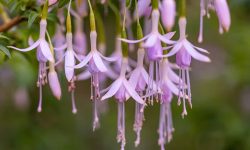Tulips are harvested for a variety of reasons. The most popular reason is that they are used as ornamental plants. Tulips are also harvested for their oil, which is used in perfumes and cosmetics.
Some people also harvest tulips for their bulbs, which can be used to propagate the plant.
Tulips are a beautiful flower that is often associated with springtime. However, did you know that tulips are actually harvested in the fall?
There are a few reasons why tulips are harvested in the fall.
For one, the weather is cooler which helps to preserve the tulips. Additionally, the days are shorter in the fall which means that the tulips don’t grow as much. This results in a smaller, more compact bulb which is ideal for forcing (a process where bulbs are forced to bloom indoors).
Another reason why tulips are harvested in the fall is because it allows growers to have a longer blooming season. By harvesting them in the fall and then storing them properly, growers can ensure that their tulips will bloom early – sometimes even before Christmas!
So, there you have it!
Now you know why tulips are actually harvested in the fall instead of spring.
The Story of The Tulips – From Planting to Harvest Process With Modern Machines
What are Tulips a Symbol of
Tulips are a symbol of springtime and new beginnings. The word “tulip” is derived from the Turkish word for turban, which is thought to be how the flower got its name. Tulips were first introduced to Europe in the 16th century, and they quickly became a symbol of luxury and wealth.
In the 18th century, tulips were so valuable that they were used as currency in some parts of Europe. Today, tulips are grown all over the world and are associated with many different meanings. For example, in Holland, tulips are often given as a symbol of love.
What are Tulip Bulbs Used for
A tulip bulb is a storage organ that contains all the nutrients a tulip plant needs to grow. A mature tulip bulb can weigh up to 50 grams (1/4 lb). Tulips are planted in the fall and bloom in the spring.
Tulips are native to central Asia and were first introduced to Europe in the 16th century. The Netherlands is now the world’s leading producer of tulips, with over 3,000 growers producing over 4 billion bulbs each year.
Tulip bulbs are used for both ornamental and culinary purposes.
Ornamental tulips are planted in gardens and parks around the world, while culinary tulips are used in salads, soups, and other dishes.
The most popular variety of ornamental tulip is the Darwin Hybrid, which was developed in the 19th century. This variety has showy flowers that come in a wide range of colors including red, pink, yellow, orange, and white.
Culinary tulips are typically smaller than ornamental varieties and have a mild flavor similar to lettuce or endive. They can be used raw in salads or cooked like greens. Red-leafed varieties of culinary tulips are often used as garnishes for plates or platters due to their vibrant color.
Harvesting Tulip Bulbs
It’s that time of year again! Time to harvest those beautiful tulip bulbs that have been gracing your garden with their presence. Here is a step-by-step guide to ensure a successful harvest:
1. Wait until the leaves of the tulips have died back completely before harvesting. This typically happens in late summer/early fall.
2. Carefully dig up the bulbs, making sure not to damage them.
3. Place the bulbs in a cool, dry place for storage. An unheated basement or garage would work perfectly.
4. Check on the bulbs periodically throughout the winter to make sure they are still dry and not rotting.
If you notice any signs of rot, discard those bulbs immediately.
5. Come springtime, replant your bulbs and enjoy watching them bloom all over again!
Tulip Season
Tulip season is upon us! These beautiful flowers are in full bloom and ready to be enjoyed. Here are some tips on how to make the most of this wonderful time of year:
1. Visit a tulip farm or garden. There’s nothing like seeing these flowers up close and personal. Plus, you’ll be able to cut your own bunch to take home with you!
2. Incorporate tulips into your décor. Use them as centerpieces, in vases around the house, or even as part of a spring wreath for your front door.
3. Enjoy tulips in food and drink form.
Add them to salads or use them as garnishes for cocktails and mocktails alike. You can even bake with tulips – try making tulip cupcakes or a show-stopping tulip cake!
4. Give someone special a bouquet of tulips.
Whether it’s a friend, family member, or significant other, they’re sure to appreciate this gesture of thanks during Tulip Season.

Credit: www.alamy.com
What are Tulips Used For?
Tulips are a popular flower that is often used for decoration. While they are most commonly seen in bouquets or as centerpieces, tulips can also be used to add color and beauty to any garden. Tulips come in a wide range of colors, making them a versatile choice for any landscaping project.
Why are Tulips Cultivated?
Tulips are one of the most popular flowers in the world and have been cultivated for centuries. There are many reasons why tulips are grown, including their beauty, wide array of colors, and easy care.
Tulips originate from the Ottoman Empire, where they were first introduced to Europe in the 16th century.
They quickly became a symbol of wealth and luxury, as only the wealthy could afford to grow them. Tulips were so coveted that they even became known as “tulip mania” or “tulip fever.” While this craze eventually died down, tulips remain popular to this day.
In addition to their long history, tulips are also relatively easy to grow. They tolerate a range of climates and soil types, and can even be grown indoors. Tulips require very little maintenance; once they’re planted, they will come back year after year with minimal care.
Perhaps the most well-known reason for growing tulips is their beauty. Tulips come in a wide variety of colors, from traditional reds and yellows to more unusual shades like blue and black. They make an excellent addition to any garden or bouquet, and their simple elegance is timeless.
Whether you’re looking for a flower with a long history or one that’s easy to take care of, tulips may be the perfect choice for you. Their beauty and versatility make them one of the most popular flowers in cultivation today.
What is Harvested from Tulips?
Tulips are a beautiful spring flower that come in many different colors. They are commonly seen in white, pink, purple, and red. You may be surprised to learn that tulips are actually a type of onion!
The bulb of the tulip is what is harvested from the plant.
Tulip bulbs can be eaten like any other type of onion, however they are much milder in taste. They can also be used to make a variety of dishes such as roasted tulip bulbs, mashed potatoes with tulips, or even pickled tulips!
If you want to grow your own tulips, you will need to plant the bulbs in the fall. Once they have bloomed in the spring, you can then dig them up and enjoy them for years to come!
What is the purpose of harvesting tulips?
The purpose of the tulip harvesting process is to gather mature tulip bulbs for various uses. By carefully extracting them from the soil, the bulbs can be propagated, sold, or replanted for future blooms. The moment of harvesting is crucial to ensure the bulbs have reached their optimal size and condition, guaranteeing healthy and vibrant tulips in the seasons to come.
Why Do You Have to Dig Up Tulip Bulbs Every Year?
Tulip bulbs are typically planted in the fall and will overwinter in the ground. In the spring, as the weather warms up, the tulip bulbs will begin to sprout and grow. Once the tulips have bloomed and died back, the bulb will go dormant for a period of time.
To ensure that your tulips come back year after year, you need to dig them up and replant them every few years. This allows the bulbs to rejuvenate themselves and produce healthy blooms.
Conclusion
Tulips are harvested for their beautiful blooms. The brightly colored flowers add a splash of color to any garden and are perfect for cutting and arranging. Tulips are easy to grow and care for, making them a popular choice among gardeners.
However, tulips need to be harvested at the right time to ensure they remain fresh and vibrant. If left on the plant too long, tulips will begin to wilt and lose their color.






